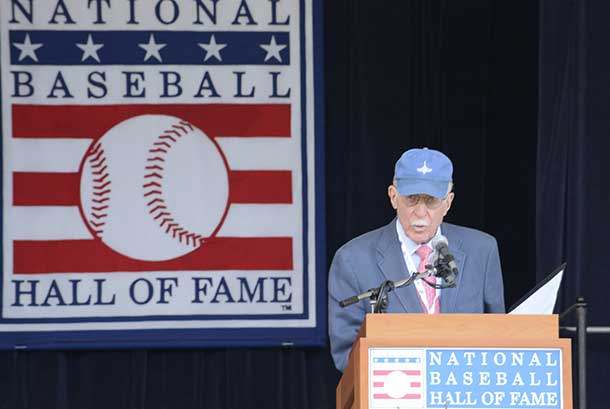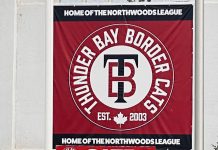
Angell – True Connector to More than Baseball
THUNDER BAY – Thoughts of Roger Angell one of America’s finest writers being inducted into Baseball’s Hall of Fame in Cooperstown this Summer of 2014 bring connections with an affirmative current in literary adventure. Virtually like a story by Mark Twain.
Let me put my persuasion before you.
It was 1993. A remarkable, and yet, to become an historic USA summer.
I drove to Minneapolis, from my home in Thunder Bay, Ontario, Canada working on theme of what baseball means to North Americans? It’s truly a vein of our summers as is Cricket inside the British Isles and Australia. And, as Canada’s
iconic Peter Gzowsky once aptly noted it’s truly our summer narrative.
My intent was to watch New York and Boston playing the Twins.
Interviews with Tony Kubek (who played for the Yankees Casey Stengel) and a distinguished Bronx Bomber called Don Mattingly.
Intermixed with Joe Castiglione, long time baseball broadcaster with the Red Sox. Retired Hall-of-Famer Johny Pesky who played with Ted Williams.
Butch Hobson Manager of the Red Sox. Hobson was a teammate of the great Yaz. Plus the Twins Tony Oliva so admired in his All-Star Career.
Besides Minnie Minoso, the only one to play in seven decades of baseball, to be honoured at a game. And, perhaps, Roger Angell writing for the New Yorker?
Well it turned into a summer that taught Nature watchers everywhere to focus on the Mississippi River. From where it claims its initial source in Minneopolis-St. Paul to whereever it carves a huge navigational channel meandering like a watery spine all the way south to New Orleans. It went beyond forecasts. With its prolific strength becoming an unbounded Mississippi River for all time.
Its floodwaters created Features in National Geographic and every daily newspaper across the Continental U. S. Granta Magazine’s travel writer Jonathan Raban flew in from Seattle to pen his classic Mississippi Water eventually becoming a book. With geographic weather maps bursting with overwhelming pictures as a rampaging river rose to become an Epic. And, without knowing he would he be able to make it to the Metrodome, there he was Jim Kaat, an admirable TV broadcaster, who finally made the trek.
Kaat knows Angell well where Angell has written on the Sporting Scene for the New Yorker since 1972. Angell writing dozens of baseball books (including a lot of material on the Mets and Yankees) covering everything from the Grape Fruit League’s Spring beginnings to its finale in October and Hallowe’en.
However Kaat immediately circumvented baseball with what he had witnessed. Covering the Cardinals in St Louis, he opened with, ”The Mississippi is right out of whack. From the air by plane you can see houses being swept from their shores.
It’s mindboggling. This river that is one of the main shipping waters of our country has set records.”As a former Twins pitcher Kaat used his hands animating the surreal overflows mighty effluence beyond what is traditionally normal.
Jonathan Raban wrote, ”The sunlit Mississippi was a yellow-purple. The colour of a ripe bruise. It really sounded like it was a fire as it poured over its banks and crackled into nearby woods.”
As those weeks went on the Mississippi subsided. It was a never- to- be-forgotten illustration of nature’ s titanic forces.
Though the river Mark Twain immortalized in his books had affected mind boggling vistas of land masses, and emergency exits, through countless states every week its roily waters washed over. We compared it to Mount Helens’ volcanic
eruptions in 1980.
Through a colleague of Angell’s writing for a New York daily informed me Angell had taken a welcomed summer break and retreat to New England.
Only a night later there was delight in the New York scribe’s voice announcing how friends back home just had twins. ”How fitting,” he remarked coming by our booth, ”We will have the perfect toy mascot for the child. It’s a fluffy
Minnesota Twins doll.”
Going home I remember what a connector Roger Angell’s books to baseball had become. Especially as Twain’s Mississippi stories streamed through everyone’s comings and goings. Twain is one of Angell’s favourites. Fitting I presumed. Without Angell, many journalists were actually writing about the Mississippi and quoting from Twain’s classics.
A day after crossing the Border our phone rang. It was Angell. He was calling from a cottage in Maine. Eager to field my questions. Angell not only talked about America’ s national pastime, he also touched on basketball and hockey. One of his first New Yorker assignments was covering hockey at old Madison Square Garden where Thunder Bay’s Edgar Laprade was an All-Star with the Rangers.
It was obvious what a remarkable thread Angell can stitch as in a beautiful book like Once More Around The Park. Born in 1920, now in his nineties he covered legendary dispatches about those who’d watched Babe Ruth in their day. ”l’l always smile re-reading a line Angell quoted from one of those who saw Ruth in the outfield. “Ruth was on the green field, illustrating those enormous throws.”
To a fairly recent book written about David Cone. A hurler who wore both Yankee pin stripes and the colours of the Red Sox Home Towne 9.
Angell spun sequences of how penetrating baseball might be season after season. Every game, wherever it’s played. As an international sport now played on many continents. Always displays something newly intrinsic. Every pitch.
Every time. I copied his writer’s enthusiasm into a notebook I’ve lifted from a shelf in our library this week.
Angell said this before hanging up, “You’d do well to dip into baseball’s Red Smith’s memorable writings. Smith’s a legend of mine.” And I did.
Ronn Hartviksen




